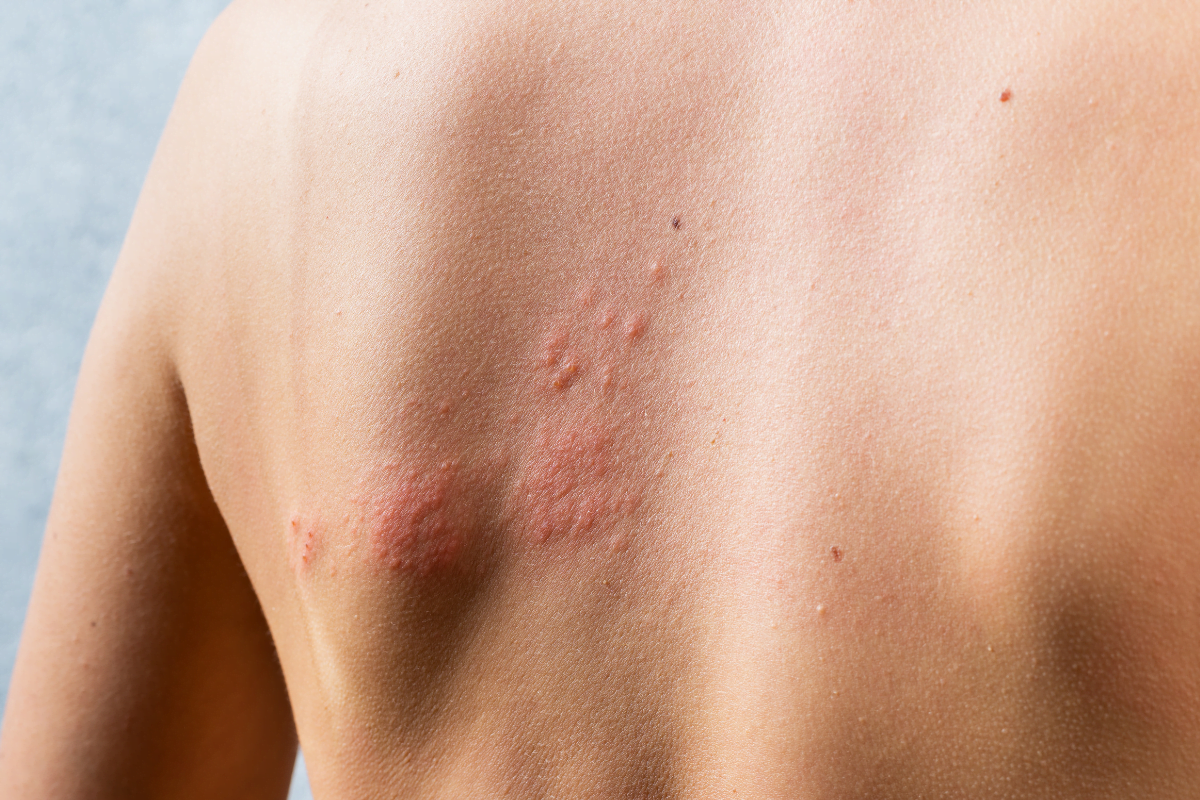Living with porphyria cutanea tarda treatment decisions can feel overwhelming. You deserve clear, practical steps that center your safety and lived experience. This guide explains causes and triggers, how clinicians diagnose PCT, and proven ways to reduce skin damage and relapses. It also covers sun care, liver health, and follow-up so you can advocate confidently at appointments.
Key Takeaways
- Core goals: reduce porphyrins, protect skin, and manage triggers.
- Two main options: scheduled phlebotomy or low-dose antimalarial therapy.
- Address liver risks and alcohol to lower relapse potential.
- Sun avoidance, clothing, and sunscreen lessen blistering and fragility.
Understanding PCT: Causes and Triggers
Porphyria cutanea tarda arises when porphyrins build up and damage sun-exposed skin. The core biochemical issue is reduced uroporphyrinogen decarboxylase activity (low UROD enzyme activity), which allows light-sensitive porphyrins to accumulate. For many people, this is an acquired condition influenced by iron overload and environmental or hormonal factors. A smaller group inherits a susceptibility that lowers UROD activity from birth.
Common contributors include alcohol use, chronic hepatitis C virus (HCV), estrogen exposure, and smoking. Iron excess can worsen enzyme inhibition and accelerate skin injury. Family variants in the hemochromatosis gene (HFE) may raise iron stores, amplifying risk. To learn root drivers and tailor care, ask your clinician to review your history, medications, and lab patterns. This context supports action on porphyria cutanea tarda causes without blame and with empathy.
How PCT Shows Up on Skin
Most people notice fragile skin on the hands and forearms, then blisters after minor bumps. Lesions heal slowly and can scar or create milia (small white cysts). Facial hypertrichosis (increased hair), redness, and color change may follow sun exposure. These visible changes can affect work, hobbies, and self-image, which is why practical prevention matters as much as lab results.
Beyond the skin, some patients report fatigue and mood effects linked to disrupted sleep and wound care. Dark or reddish urine after sun may reflect high porphyrins. However, other conditions can mimic these findings. Clear documentation of porphyria cutanea tarda symptoms helps your healthcare team act sooner and avoid unnecessary tests.
Porphyria Cutanea Tarda Treatment
Treatment aims to lower circulating porphyrins and stop new blistering. Two time-tested approaches help most people: therapeutic phlebotomy to reduce iron burden or carefully dosed antimalarial therapy that promotes porphyrin clearance. Your clinician will match the approach to your iron levels, liver status, comorbidities, and preferences.
Equally important are trigger management and sun protection. Reducing or stopping alcohol, addressing viral hepatitis, and reviewing estrogen use can support remission. Many patients also benefit from structured skin care, protective clothing, and practical work accommodations. A plan that balances medical therapy with everyday routines is more sustainable over time.
Phlebotomy and Iron Reduction
When iron stores are elevated, phlebotomy for porphyria cutanea tarda can help restore UROD activity and reduce porphyrins. Sessions remove red blood cells and with them iron, gradually lowering ferritin. Clinicians usually individualize the volume and frequency to avoid symptomatic anemia, using labs to guide pacing. People often notice fewer blisters as porphyrins fall.
Monitoring typically includes hemoglobin and ferritin to track safety and response. Your team may space sessions once targets are reached, then shift to maintenance or observation. If you feel lightheaded, short of breath, or profoundly tired, report symptoms promptly so timing can be adjusted. Thoughtful pacing protects gains while keeping daily life manageable.
Medication Option: Low-Dose Antimalarial
Some patients cannot undergo frequent blood removal or do not have iron overload. In these cases, clinicians may consider low dose hydroxychloroquine PCT to mobilize excess porphyrins. Dosing is kept low to reduce the risk of liver stress and to avoid rapid porphyrin shifts. Eye health and liver tests are commonly monitored during treatment.
This option may be useful when ferritin is near normal or venous access is challenging. People with significant liver disease or certain enzyme deficiencies require extra caution. Discuss potential side effects, compatible dosing schedules, and any contraindications with your clinician before starting. Decisions should reflect your overall risk profile and treatment goals.
Testing and Diagnosis
A careful history and targeted labs confirm porphyria cutanea tarda diagnosis. Clinicians often start with screening urine or plasma porphyrins, which rise in characteristic patterns. Further testing can separate PCT from other porphyrias or blistering skin disorders. When available, specialty assays help pinpoint enzyme activity and porphyrin fractions.
Supporting labs frequently include iron studies, liver enzymes, viral hepatitis screening, and occasionally genetic testing for HFE variants. Your clinician may check porphyrins during treatment to document improvement. Because tests vary by lab, ask how results will guide follow-up and maintenance decisions. Alignment on testing helps reduce uncertainty and repeat sampling.
Liver Health and Comorbidities
The skin is the most visible site of injury, but the liver is often involved. Addressing porphyria cutanea tarda liver disease includes managing alcohol intake, evaluating metabolic risk, and screening for viral hepatitis. For people with HCV, antiviral therapy may reduce porphyrin levels by removing a key trigger. Likewise, reviewing estrogen exposure and smoking supports long-term stability.
Neutral information from trusted sources can guide shared decisions. For background on PCT and its systemic links, see the NIH’s Genetic and Rare Diseases overview, which summarizes causes and evaluation steps (NIH rare disease resource). If hepatitis C is suspected or known, current testing and treatment recommendations are outlined by the CDC, with patient-focused materials for next steps (CDC hepatitis C guidance).
Skin and Sun Care
Daily routines can lower skin injury without disrupting your life. Broad-spectrum sunscreens, UV-protective clothing, gloves for chores, and wide-brim hats help limit trauma and light exposure. Window films and car visors can reduce indoor UV, an underappreciated trigger. Gentle cleansers and non-fragranced moisturizers preserve the barrier and reduce irritation.
When going outside, plan around the strongest sunlight hours and use shade when possible. Replace damaged dressings quickly and keep blisters clean to prevent infection. Because individualized plans work best, bring photos of lesions and routines to your visits. These practical steps support sun protection porphyria cutanea tarda and reduce day-to-day setbacks.
Addressing Triggers and Hormones
Reducing alcohol can meaningfully lower porphyrin production and improve skin healing. If estrogen therapy is relevant, discuss alternatives or dose changes with your prescriber. Smoking cessation may reduce oxidative stress and aid response. People living with HIV or hepatitis C can still achieve good control by aligning antiviral care with PCT management.
Tip: Keep a brief journal of exposures, sun time, and any new medications. Patterns often emerge that guide safer routines. Small, sustainable changes matter more than perfection.
Follow-Up, Monitoring, and Relapse Reduction
After remission, regular check-ins help keep porphyrins low and skin stable. Your clinician may periodically recheck porphyrins, liver enzymes, and iron studies to watch for early changes. Revisiting alcohol use, medications, and sun habits at each visit keeps prevention front and center. Early course corrections can prevent larger setbacks.
If relapse occurs, re-starting the prior successful approach often works. Some people require intermittent maintenance phlebotomy, while others do well with watchful waiting. Establishing a shared plan for return of symptoms reduces uncertainty and speeds response. Keep copies of key labs and summaries so new clinicians can act quickly.
Practical Testing Details
Urine or plasma porphyrin patterns often normalize gradually, then plateau. Because test methods differ, try to use the same laboratory when tracking trends. Sample handling and light exposure can affect accuracy, so follow collection instructions closely. Ask your clinician which test will guide the next decision, not just what is available.
When genetic susceptibility is suspected, HFE testing can clarify iron handling risks. This information may influence family screening and counseling. UROD activity assays are specialized and not always necessary for management. The main goal is practicality: use the least testing needed to direct safe, effective care.
Everyday Living and Work
PCT can intersect with jobs, caregiving, and outdoor obligations. Advocate for reasonable adjustments like UV shields at windows, modified outdoor hours, or protective gloves. Sports and hobbies may continue with extra planning and post-activity skin checks. A small kit with dressings, sunscreen, and hand protection can make busy days easier.
Connecting with knowledgeable clinicians and evidence-based resources keeps momentum steady. For clinical practice fundamentals and therapeutic choices, the European Association for the Study of the Liver provides a succinct guideline summary that clinicians use in care planning (EASL porphyria guidelines). Bringing these references to visits can help align expectations.
Diet and Supportive Routines
Balanced nutrition supports wound repair and energy. Steady meals with adequate protein, fruits, and vegetables can help recovery. If iron overload is present, your clinician may advise avoiding supplemental iron unless clearly indicated. Hydration and gentle movement support sleep and stress management, which also affect coping.
Note: There is no single PCT diet. Instead, focus on minimizing personal triggers and maintaining consistent routines. A registered dietitian familiar with liver conditions can tailor guidance to your needs and preferences.
Recap
PCT care works best when medical therapy and daily strategies move together. Iron reduction or carefully dosed antimalarial therapy can lower porphyrins, while sun protection and trigger management prevent new injury. Clear communication, routine monitoring, and empathy-centered planning keep treatment sustainable. With the right supports, people can reduce flares and protect their skin and liver health.
This content is for informational purposes only and is not a substitute for professional medical advice.

